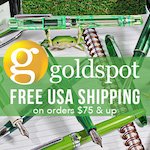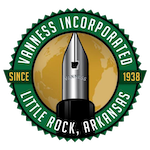(Jeff Abbott is a regular contributor at The Pen Addict. You can find more from Jeff online at Draft Evolution and Twitter.)
The Pilot Metropolitan is one of those pens that caused quite a stir when they first hit the U.S. market. Why? Well, for me it was the price, the quality, and the feel of the pen that made it seem like such an excellent value. It's a fantastic everyday pen, a vey good choice for a first fountain pen, and a pretty good choice for a gift pen. I guess I've overlooked it in my reviews because it's just so ubiquitous and standard nowadays. But, I recently ordered a new one due to my recent predicament of only having one fountain to use. The Metropolitan seemed like the only right choice when I was trying to pick an affordable pen to use as an everyday writer for the next few weeks.
I went over to JetPens and picked out the white Metro with a fine nib, and also got a pack of Pilot Blue-black cartridges for good measure because their blue-black is one of the best. In a couple days, I was back to using a regular size pen as my everyday writer. The Liliput is a great pen, but a little too small for my taste when it comes to longer writing sessions.
Now, I purchased my first Metropolitan back in 2013 and used it heavily for several months. This review is for a new pen, but one that I've used a lot in other forms.
First off, there's the exterior of the pen, which is very simple and balanced. The original pens only came in three colors (black, silver, and gold) with three pattern options for the band (dot, zig-zag, and plain). Later on, Pilot released other designs that featured fake animal skin textures and more colors. I went with the white body and tiger print band. Personally, I love this design, but I know it's probably polarizing.
The pen has a fantastic weight since the insides of the barrel are supposedly brass. The outside is metal, probably aluminum, and I'm a huge sucker for metal bodied pens in general. In my opinion, Pilot hit a home run with this particular line of fountain pen. It's also very comfortable for me when I write — I've never had any complaints or aches when using the pen.
Apart from that, it's all about the nib. And, like I have come to expect from Pilot, it's smooth and error-free from the beginning.
My first Metropolitan has a medium nib because that's all Pilot offered in the first round. Later, they also introduced the fine nib, which is what I got this time. I've gotten to the point where I love both sizes and I pick them based on my mood. This one is no exception. Thin, crisp lines come out of this nib at a steady rate. The blue-black excels with this size nib, as you get a healthy dose of blue with just enough business feel.
For under $20, I don't think you can do better than the Metropolitan. It's a crowd-pleaser. It's about 4-times more than a Preppy, but it's leaps and bounds ahead of the Preppy in feel and performance. You can toss the Metro in the bag and not worry about it, while the Preppy will soon crack or break with minor wear.
It's also neutral compared to the Safari since it doesn't have a unique grip. And, now that they offer more color and band options, you can get one that offers a little more personality as well.
If you haven't tried out a Metro yet, you owe it to yourself to try out the fountain pen that offers the most value! It's an excellent beginner fountain pen, but it also hangs with the more expensive pens as well. It's a win-win.



















